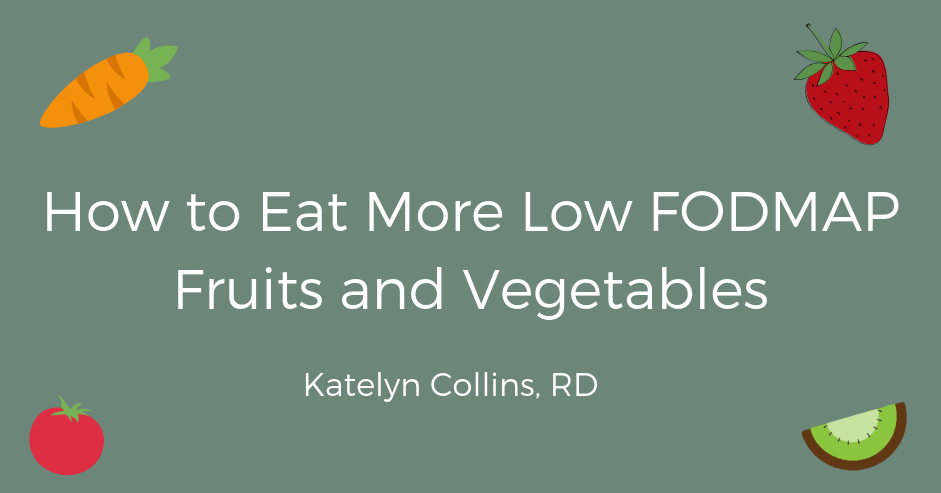How to Eat More Low FODMAP Fruits and Vegetables

Almost everyone can agree that eating more fruits and vegetables is a fantastic way to improve your diet. Unfortunately, many common fruits and vegetables are limited or avoided on the low FODMAP diet. Read on to find out how to increase the amounts of low FODMAP fruits and vegetables in your diet!
Start slow
It’s easy to get caught in the trap of severely limiting your diet when you have irritable bowel syndrome (IBS). You may have gotten to the point of only eating a handful of foods by the time you were put on the low FODMAP diet. Even after finding relief from your symptoms, you might still be afraid to start adding in low FODMAP fruits and vegetables (or any new foods for that matter). Going from one serving of fruits and vegetables per day to five servings might be too large of a jump, so you may want to slowly increase the amount you eat each week.
Sample
Use a low FODMAP diet app (such as the Monash University app) or a low FODMAP food list and note all the fruits and vegetables you currently eat. Then, make it a point to buy one new fruit or vegetable per week until you’ve sampled them all. Following FODMAP-related social media accounts is also a great way to get inspiration (#FODMAP anyone?). Who knows, you may even find a new favorite food!
Spread it out
If you have issues digesting a lot of fiber in one meal, consider spreading out your low FODMAP fruits and vegetables over the entire day. Instead of eating multiple servings of a giant salad at dinner, try including one serving of a low FODMAP fruit or vegetable per meal and slowly increase the servings based on your tolerance. It’s also helpful to note that the current recommendation is no more than one serving of low FODMAP fruit per meal.
Slice and dice
Why is the food court section of the grocery store so appealing? Convenience! You can use the convenience factor in a healthy way by cutting up fruits and vegetables into easy to eat pieces and storing them in the refrigerator. For vegetables, consider cooking large quantities at once and saving in small containers to heat up and add to meals.
Serving size matters
I cannot stress this enough! Remember that some high FODMAP foods are low FODMAP depending on the serving size. Adding these foods into your diet can increase variety and make it easier to eat more fruits and vegetables.
While some fruits and vegetables need to be restricted while on the elimination phase of the low FODMAP diet, there is no need to avoid low FODMAP fruits and vegetables. Think of the diet as an opportunity to branch out and try some new foods!
Ready to get to the root of your IBS symptoms?
Click here to learn how to work with me!